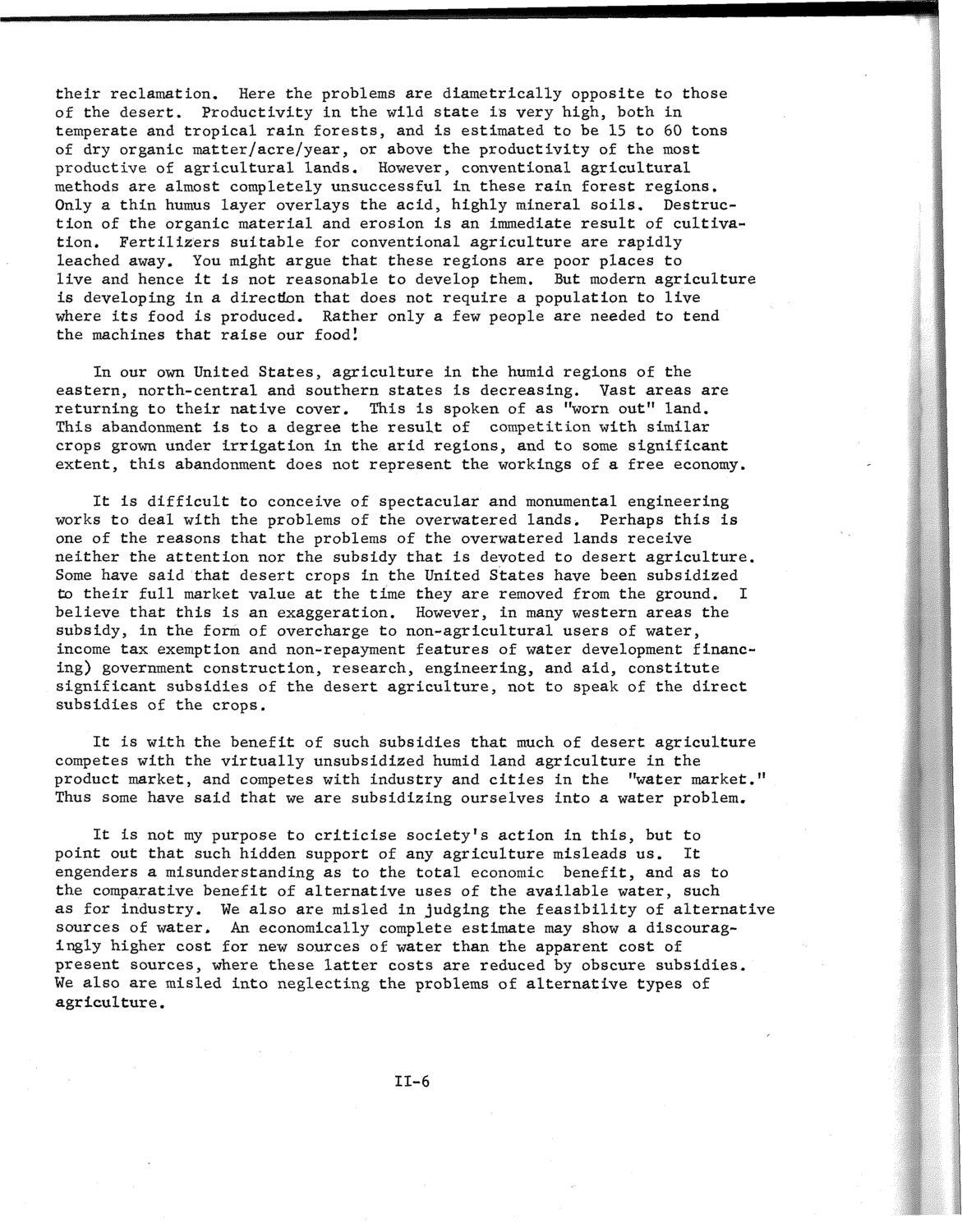| |
| |
Caption: SWE - Proceedings of the First International Conference of Women Engineers and Scientists
This is a reduced-resolution page image for fast online browsing.

EXTRACTED TEXT FROM PAGE:
their reclamation. Here the problems are diametrically opposite to those of the desert. Productivity in the wild state is very high, both in temperate and tropical rain forests, and is estimated to be 15 to 60 tons of dry organic matter/acre/year, or above the productivity of the most productive of agricultural lands. However, conventional agricultural methods are almost completely unsuccessful in these rain forest regions. Only a thin humus layer overlays the acid, highly mineral soils. Destruction of the organic material and erosion is an immediate result of cultivation. Fertilizers suitable for conventional agriculture are rapidly leached away. You might argue that these regions are poor places to live and hence it is not reasonable to develop them. But modern agriculture is developing in a direction that does not require a population to live where its food is produced. Rather only a few people are needed to tend the machines that raise our food! In our own United States, agriculture in the humid regions of the eastern, north-central and southern states is decreasing. Vast areas are returning to their native cover. This is spoken of as "worn out" land. This abandonment is to a degree the result of competition with similar crops grown under irrigation in the arid regions, and to some significant extent, this abandonment does not represent the workings of a free economy. It is difficult to conceive of spectacular and monumental engineering works to deal with the problems of the overwatered lands. Perhaps this is one of the reasons that the problems of the overwatered lands receive neither the attention nor the subsidy that is devoted to desert agriculture. Some have said that desert crops in the United States have been subsidized to their full market value at the time they are removed from the ground. I believe that this is an exaggeration. However, in many western areas the subsidy, in the form of overcharge to non-agricultural users of water, income tax exemption and non-repayment features of water development financing) government construction, research, engineering, and aid, constitute significant subsidies of the desert agriculture, not to speak of the direct subsidies of the crops. It is with the benefit of such subsidies that much of desert agriculture competes with the virtually unsubsidized humid land agriculture in the product market, and competes with industry and cities in the "water market." Thus some have said that we are subsidizing ourselves into a water problem. It is not my purpose to criticise society's action in this, but to point out that such hidden support of any agriculture misleads us. It engenders a misunderstanding as to the total economic benefit, and as to the comparative benefit of alternative uses of the available water, such as for industry. We also are misled in judging the feasibility of alternative sources of water. An economically complete estimate may show a discouragingly higher cost for new sources of water than the apparent cost of present sources, where these latter costs are reduced by obscure subsidies. We also are misled into neglecting the problems of alternative types of agriculture. II-6
| |